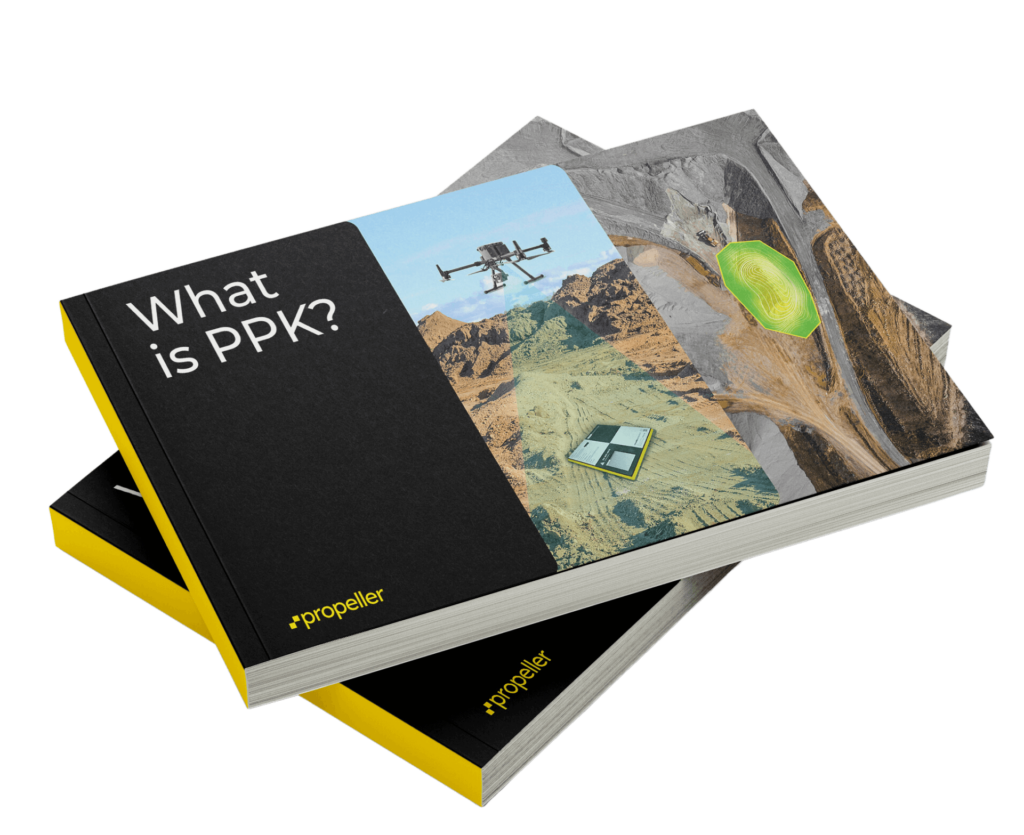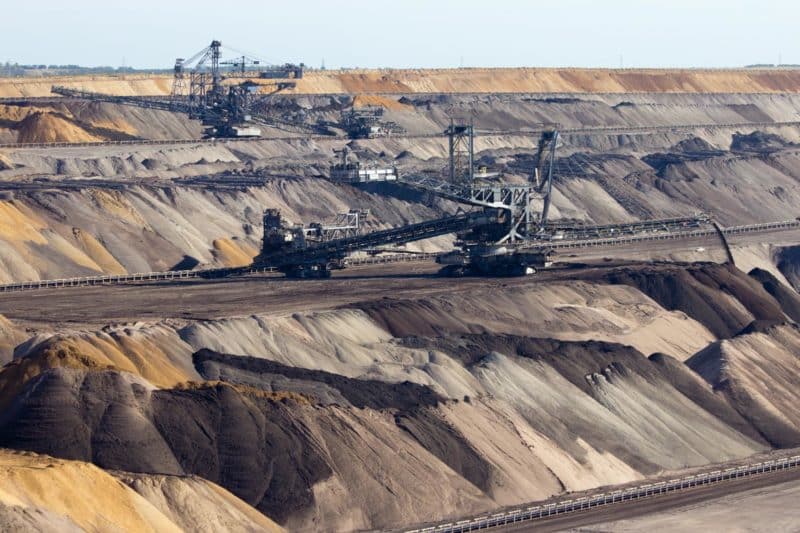Rock solid strategies: Propeller’s top 5 workflows for mining and aggregates
In the vast and often rocky terrain of mining and aggregates, navigating day-to-day work is about more than “just” moving mountains—it’s about uncovering the most efficient and sustainable path forward.
Many quarries still rely on surveys every six months for stockpile inventory checks, which means relying on guesswork and outdated spreadsheets to estimate what’s gone in and out. Quarry managers are all too familiar with stockpiles that vanish into thin air (on paper, anyway), leaving financial forecasts and operational plans in disarray.
While mines share some of the same challenges, they have their own layers of complexity. Managing the alchemy of mineral processing requires precision in blending different material grades to extract valuable elements without waste. Getting the mix right without accurate and timely stockpile data is a pure guessing game.
Enter Propeller, with workflows designed to address these challenges head-on. Accurate survey data at speed doesn’t just mitigate the risk of operational surprises—it also enhances financial planning, environmental compliance, and overall site management.
Ready to learn more? Let’s explore Propeller’s top five workflows for mining and aggregates.
#1: Know what you have on hand with accurate stockpile volumes
Stockpile management is one of the most important activities for mines and quarries. But most quarries only survey twice a year, which means some inevitable surprises regarding your stock—like discovering that a stockpile you’ve just sold is mysteriously “missing.”
In mining, the value lies not just in the volume of rock, but what’s inside it. By understanding your volumes for each material grade, you can create the right balance of chemicals to dissolve the rock and preserve the ore within without needless waste.
Propeller makes it easy for non-surveyors to capture data by putting a drone in the air as often as needed.
With frequent, accurate stockpile measurements, quarries can balance stock with demand, ensuring that you stay on top of stockpiles without walking them. You’ll always know what you have available to sell and how much you need to blast, without any of those awkward “vanishing acts.”
Mine personnel can launch a 15-minute drone flight daily to track the volume from each grade pile that has gone into the crusher. This will help you optimize the processing, yielding more consistent—and valuable—output.
#2: Efficiency down to the bedrock with effective in-pit management
Whether you’re trying to measure material movement or monitor the condition of haul roads, in-pit management is crucial for on-site productivity and safety.
Traditional methods are time-consuming and rely on specific personnel like engineers, who aren’t always available to help. As a result, most quarry managers have gotten used to thinking of material moved as a “nice-to-have” data point.
Propeller gives your team point-and-click insights into pit operations, from cut/fill volumes to the current state of slopes and grades. You can even get quick distance data directly from the map without having to visit the site and pull out a tape measure.
#3: Get precision with every blast
Blasting is both an art and a science, requiring precise calculations to ensure safety and efficiency. Traditionally, teams have relied on rough estimates that led to suboptimal results.
Propeller turns simple drone flights into detailed 3D models of your blast areas, allowing you to plan with precision.
- Preblast surveys show: Rock type variation, face angle, preblast rock condition, preblast volumes.
- Postblast surveys show: Postblast volume, muckpile shape, back damage, distribution, and fragmentation.

Gains in safety, efficiency, and yield don’t just improve immediate outcomes—they ensure the long-term viability of your site.
Our easy-to-read 3D map makes information-sharing easy, so everyone from the surveyors and engineers to supervisors can access the same data for quick collaboration.
#4: Proactive environmental management with safer tailings dams
Managing the environmental impact of tailings dams is another significant challenge. Historically, they simply couldn’t be surveyed—you can’t walk on sloped slurry—making it difficult to monitor and manage tailings dams effectively.
And there’s yet another balancing act to perfect. They are expensive to build, so maximizing your tailings dam use is essential for profitability. But you also don’t want them to overflow, which would allow toxic chemicals to impact the surrounding environment.
Drone surveys are the ideal solution. Drone-captured elevation maps make it easy to monitor sediment flow and see which parts of the dam are filling the fastest, letting you adjust for a more even fill rate.

Non-surveyors like geologists and environmental teams can put a drone in the air as often as they need to complete their own surveys without hassling on-site surveyors. This proactive approach supports effective environmental stewardship and operational safety.
#5: Safety and efficiency in the palm of your hand
Finally, there’s Propeller’s mobile app, which lets you see your precise location within the map to help fix trouble spots and flag safety issues.
As an example, let’s talk about safety berms. They’re critical for preventing accidents on haul roads, but monitoring their height and integrity over time poses a logistical challenge. Traditional survey methods are time-consuming and can divert resources from other critical tasks.
With Propeller, a simple drone flight gives you quick insight into whether your safety berms are above or below the regulated height. With a 3D map they can take anywhere, foremen can then drive down and see exactly where the berms are too low so they know where to work.
Improving communication between field and office closes the gap between “we’ve found a problem” and “issue resolved.” You can even snap a quick photo on-site to send it straight back to the office, with geotags pinning it to its precise location. Resolve issues without lengthy surveys or downtime, enhancing operational efficiency and on-site safety practices.
Propeller’s mobile app also lets you overlay design on a real-time photorealistic map so you can see what’s planned for the spot where you’re standing. Walk a future dig site to see where the boundary is, down to which trees can be saved and which can’t—all without a GPS rover.

Bonus: See the big picture with composite surveys
Most quarries aren’t big enough to need composite surveys, but they’re a huge benefit on vast mining sites. With composite surveys, you don’t need to fly your entire site each day to see the big picture. Instead, just survey the areas that have changed, then stitch your images together to create a new 3D model of the entire site.
Accelerated processing makes this workflow even easier, with processed data that comes back just two hours after you fly. Put a drone in the air at 7 a.m. and get a full 3D model back in time for your 10 a.m. meeting, letting you plan the day’s work with all the information.
Make rock-solid decisions, day in and day out
At Propeller, we’re all about giving you the tools to transform your daily work, helping you improve your operations and setting a new standard for efficiency, safety, and sustainability. Our platform was built with you in mind, with intuitive tools that bring clarity and control to complex mining and aggregate operations.
Ready to dig deeper? Request a demo today.
Want to dig into the details?
We’ve got you covered. Check out our PPK digital guide to cut through the confusion and get straight to what you need to know about PPK.





